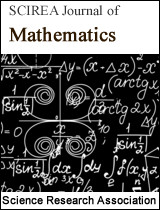Optimization of the Part Manufacturing Process Using Analytical and Simulation Models of a Closed Queueing System
DOI: 10.54647/mathematics110502 58 Downloads 11553 Views
Author(s)
Abstract
The production of a specific type of part entails a lengthy assembly process, concluding with a short firing period in a furnace. Given the high operational costs of the furnace, multiple assemblers share a single furnace, which can fire only one part at a time. The objective of this study is to determine the optimal number of assemblers, m, that maximizes the furnace utilization factor, K. We define the optimal value of m as the smallest quantity that meets the specified condition K≥0.990. To this end, we develop an analytical and simulation model based on a closed queueing system. Using an analitycal model and a GPSS World simulation model, we investigate the dependencies of the optimal number of assemblers on the following parameters: the coefficients of variation V(X), V(Y), and the ratio ρ=E(Y)/E(X). Here X represents the assembly time for a part, and Y denotes the furnace firing time of a part. We validate the simulation model by comparing its results with those obtained from an analytical method.
Keywords
closed queueing system, simulation model, GPSS World, part manufacturing process, optimization
Cite this paper
Kostyantyn Zhernovyi, Yuriy Zhernovyi,
Optimization of the Part Manufacturing Process Using Analytical and Simulation Models of a Closed Queueing System
, SCIREA Journal of Mathematics.
Volume 9, Issue 5, October 2024 | PP. 102-115.
10.54647/mathematics110502
References
| [ 1 ] | Kleinrock, L., Queueing systems, Volume 1: Theory. John Wiley & Sons Ltd, 1975, 448 p. |
| [ 2 ] | Gross, D., Shortie, J.F., Thompson, J.M. and Harris, C.M., Fundamentals of queueing theory, 4th edition, John Wiley & Sons Ltd, 2008, 528 p. |
| [ 3 ] | Jackson, J.R., “Networks of waiting lines,” Operations Research, 5(4). 518-521. 1957. |
| [ 4 ] | Buzen, J.P., “Computational algorithms for closed queueing networks with exponential servers”, Communications of the ACM, 16(9). 527-531. 1973. |
| [ 5 ] | Gershwin, S.B., Manufacturing systems engineering, Prentice Hall, 1994, 426 p. |
| [ 6 ] | Papadopoulos, C.T., Heavey, C. and Browne, J., Queueing theory in manufacturing systems analysis and design, Chapman & Hall, 1993, 393 p. |
| [ 7 ] | Birta, L.G. and Arbez, G., Modelling and Simulation: Exploring Dynamic System Behaviour, 3rd edition, Springer Nature, Switzerland, 2019, 491–520. |
| [ 8 ] | Zhernovyi, Yu., Creating models of queueing systems using GPSS World: Programs, detailed explanations and analysis of results, LAP Lambert Academic Publishing, Saarbrücken, 2015, 220 p. |
| [ 9 ] | Zhernovyi, Yu.V., Markov Models of Queueing: Texts of Lectures, Ivan Franko National University Publishing House, Lviv, 2004, 154 p. (In Ukrainian). |

